So, a new post on my favorite iOS boardgaming blog was published today, and it included a link to the second Boardgame Babylon podcast about iOS boardgames. I listened to the episode tonight, and while there were some good descriptions of the gameplay for various iPhone/iPad eurogame implementations, I didn’t feel like it actually said anything new or particularly exciting to me. I had played all of the games mentioned with the exception of Michael Schacht’s Gold, which I knew about, but had passed on for various reasons.
Coincidentally, Gold was on sale yesterday, for $.99, (also mentioned in the iOS Board Games blog post), and if it had still been on sale while I was listening to the podcast, I would have picked it up, but alas, by the time I checked, the price had gone back up to $3. Normally, I would purchase a game I’m interested in for $3, no sweat, but the reasons I passed on Gold the first time I heard about it still remain, and I guess I just feel like there are a lot of games competing for my time… For $.99, I’ll buy almost any app just to try it out and see if I like it. For $3, I feel I have to actually want to play the game before I’ll purchase. It’s not that I don’t want to play Gold, but I just can’t see myself playing it for any real length of time.
But really, here are the reasons I passed on Gold the first time around: 1) Lack of online multiplayer. Would pick it up in a heartbeat if it had asynchronous. For $3 or even $5, for sure. 2) The rules seem really simple to me. Like maybe too simple. 3) The game was made by the same person/folks who did a few other iOS games I already own, namely High Society, and Money. This game looks to be pretty nearly identical (visually) to those games. Sure, it’s a different game, it’s got different rules, but if it doesn’t FEEL like a different game to me, I will still feel somewhere inside (no matter how irrationally) that maybe it’s too similar. This is one reason I’m not a big player of card games played with a standard 52 card deck, to be honest — those games just don’t feel different enough from one another to be interesting to me in anything other than an abstract game-theory type way. (Which is not to say that I don’t find them interesting, or won’t play them, only that once I’ve played them enough to feel like I “get” what’s happening, I lose interest very quickly.)
So after being slightly disappointed that I’d missed the Gold rush (as it were), I somehow ended up on a site that features articles by the game’s developer, Shannon Appelcline. I think I’d read some of these posts by him before, possibly What Makes a Great Mobile EuroGame?, or Making Computers Think Like Auction Players, or Turning Reiner Knizia’s Money into an iPhone Game, all of which were apparently written after a specific game release. His most recent post about iPhone board game dev (written just after releasing Gold) was Sweating the Details for iPhone Card Games: Visuals, AIs, and Player Numbers. These articles are definitely worth reading, but ultimately feel a bit too much like thinly veiled marketing to me. They aren’t technical enough to qualify as howto articles, and yet that’s what it feels to me like they’re pretending to be.
As a nice bonus, I found out today that someone I’m ostensibly working with (but have yet to meet), wrote a nice roundup of Go implementations for OSX and iOS. He mentions Smart Go Kifu as the winner for him on the iPad, and that’s been on my appshopper wishlist for some time now. I have yet to pick it up, mostly because it is $20, but it looks to be well worth it, with a database of 33,000 games, 30 of which are even annotated in english. The developer, Smart Go, inc, also has a universal app with a bunch of Go books as in-app purchases. If I had all the time in the world, I would read a book about go on my iPad right now. Instead, it’s about time I go to bed.

 The first of these is Professional iPhone and iPad Database Application Programming, by Patrick Alessi, published by Wiley (Wrox) in 2011. With chapter titles like “Introducing Data-Driven Applications”, “The iPhone and iPad Database: SQLite”, “Displaying Your Data: The UITableView”, and “iPad Interface Elements”, you would definitely not know at first glance that this is an example-driven book. In fact, each of those sections (and all the other sections of the book) run you through the creation of a sample project, each building on knowledge gleaned in the previous chapters. The first chapter includes a very nice introduction to Xcode and shows you how to create a simple
The first of these is Professional iPhone and iPad Database Application Programming, by Patrick Alessi, published by Wiley (Wrox) in 2011. With chapter titles like “Introducing Data-Driven Applications”, “The iPhone and iPad Database: SQLite”, “Displaying Your Data: The UITableView”, and “iPad Interface Elements”, you would definitely not know at first glance that this is an example-driven book. In fact, each of those sections (and all the other sections of the book) run you through the creation of a sample project, each building on knowledge gleaned in the previous chapters. The first chapter includes a very nice introduction to Xcode and shows you how to create a simple 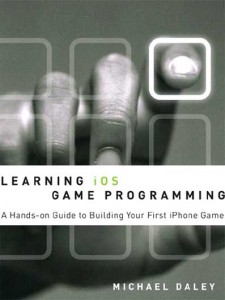 Unfortunately, I think I’m going to have to leave any in-depth review of my second learn-by-example iOS book for another day: Learning iOS Game Programming: A Hands-On Guide to Building your First iPhone Game, by Michael Daley, published by Addison Wesley in 2011. This book takes you through the author’s process of building an iOS game from start to finish. The game you build,
Unfortunately, I think I’m going to have to leave any in-depth review of my second learn-by-example iOS book for another day: Learning iOS Game Programming: A Hands-On Guide to Building your First iPhone Game, by Michael Daley, published by Addison Wesley in 2011. This book takes you through the author’s process of building an iOS game from start to finish. The game you build, 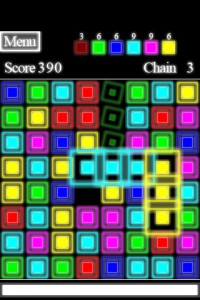
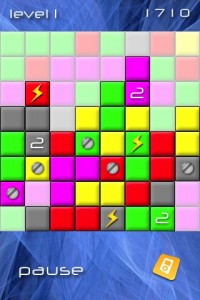

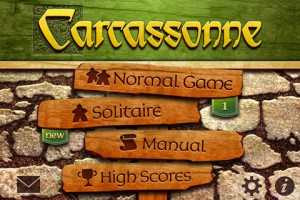

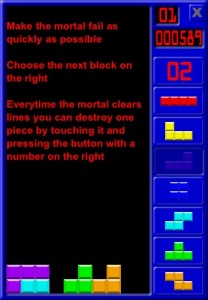 Here is a screenshot of an intriguing new tetris-variant in the app store,
Here is a screenshot of an intriguing new tetris-variant in the app store, 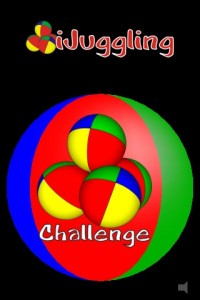
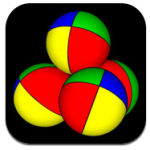 iJuggling looks very slick. The graphics aren’t amazing, but they’re good, and there are some nice touches that indicate to me that there was a lot of thought put into them. The hand grab points fade out once you touch them, for example, and the arrow pointing to the next level fills up as you get close to achieving the next level. There is some sound, indicating when a throw and/or catch has been made. It’s simple, but again, doesn’t detract from the experience. The most frustrating thing was in figuring out how to play, and after that the difficulty. I like a good challenge though, and I will definitely play with this again.
iJuggling looks very slick. The graphics aren’t amazing, but they’re good, and there are some nice touches that indicate to me that there was a lot of thought put into them. The hand grab points fade out once you touch them, for example, and the arrow pointing to the next level fills up as you get close to achieving the next level. There is some sound, indicating when a throw and/or catch has been made. It’s simple, but again, doesn’t detract from the experience. The most frustrating thing was in figuring out how to play, and after that the difficulty. I like a good challenge though, and I will definitely play with this again. JuggleFit Tracker
JuggleFit Tracker Cat Juggling
Cat Juggling iCircus – the Juggler
iCircus – the Juggler Polyball
Polyball